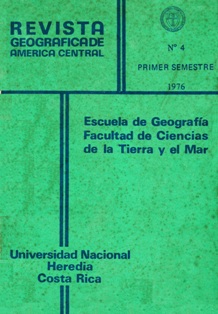NOTAS SOBRE EL EQUILIBRIO DINAMICO EN LAS PLAYAS
Keywords:
equilibrio, dinamico, playasAbstract
El estudio de las playas en cuanto sistema natural y en cuanto ecosistema biológico acapara el interés de científicos de todo el mundo por el atractivo turístico que tienen y por la aparente fragilidad que manifiestan. Además, no son raros los casos de explotación industrial de las arenas para fines de construcción y otros, justificando esa explotación en la creencia de que el mar formará de nuevo la playa y se restablecerá el equilibrio.
Mediante un enfoque simplificado y generalista, el autor plantea a profesores y estudiantes de ecología, geografía física e ingeniería civil algunos problemas e informaciones sobre generación de las olas y el oleaje, tasas de abastecimiento de arena y su pérdida, tamaño y características del material, profundidad del agua en que se desplaza la onda, características topográficas del área cercana a la costa y del estrán; las corrientes del litoral, que define, como una faja transportadora, etc. También cita algunos casos de formaciones sedimentarias marinas recientes (flechas o cordones litorales) y algunos problemas derivados de la construcción de rompeolas en el país. Como los estudios referentes a la dinámica del mar recién se están iniciando en Costa Rica, el autor cita ejemplos de Estados Unidos.
Downloads
How to Cite
Issue
Section
License
Proposed policy for journals offering Open Access
Authors publishing their works in the Journal acknowledge and agree to the following terms:
a) Authors retain the copyrights to their works and guarantee the Journal the right to be the first to publish their works, under the Creative Commons License Attribution-NonCommercial-ShareAlike 4.0 International, CC BY-NC-SA 4.0 International (https://creativecommons.org/licenses/by-nc-sa/4.0/deed.es), which allows others to share works upon complying with the acknowledgment of authorship and mention of the Journal as the original publisher of the work.
b) Authors are permitted to separately establish additional agreements for the non-exclusive distribution of the official edition of the work published in the Journal (for example, authors may desire to place the work in an institutional repository or incorporate it into a book that is to published elsewhere) so long they acknowledgment to recognize the Journal as the original publisher. The aforementioned additional agreements must respect the terms of the non-profit character and sharing philosophy of the original license (CC BY-NC-SA 4.0 International, https://creativecommons.org/licenses/by-nc-sa/4.0/deed.es).
c) Authors are encouraged to archive the post-print or editor/PDF version in Open Access repositories.






 REVGEO is licensed under https://creativecommons.org/licenses/by-nc-sa/4.0/deed.es
REVGEO is licensed under https://creativecommons.org/licenses/by-nc-sa/4.0/deed.es
.svg_4.png)

_(1).png)
_(1)_(1)_(1)_1.png)
(2)(1)(1)(1).png)
